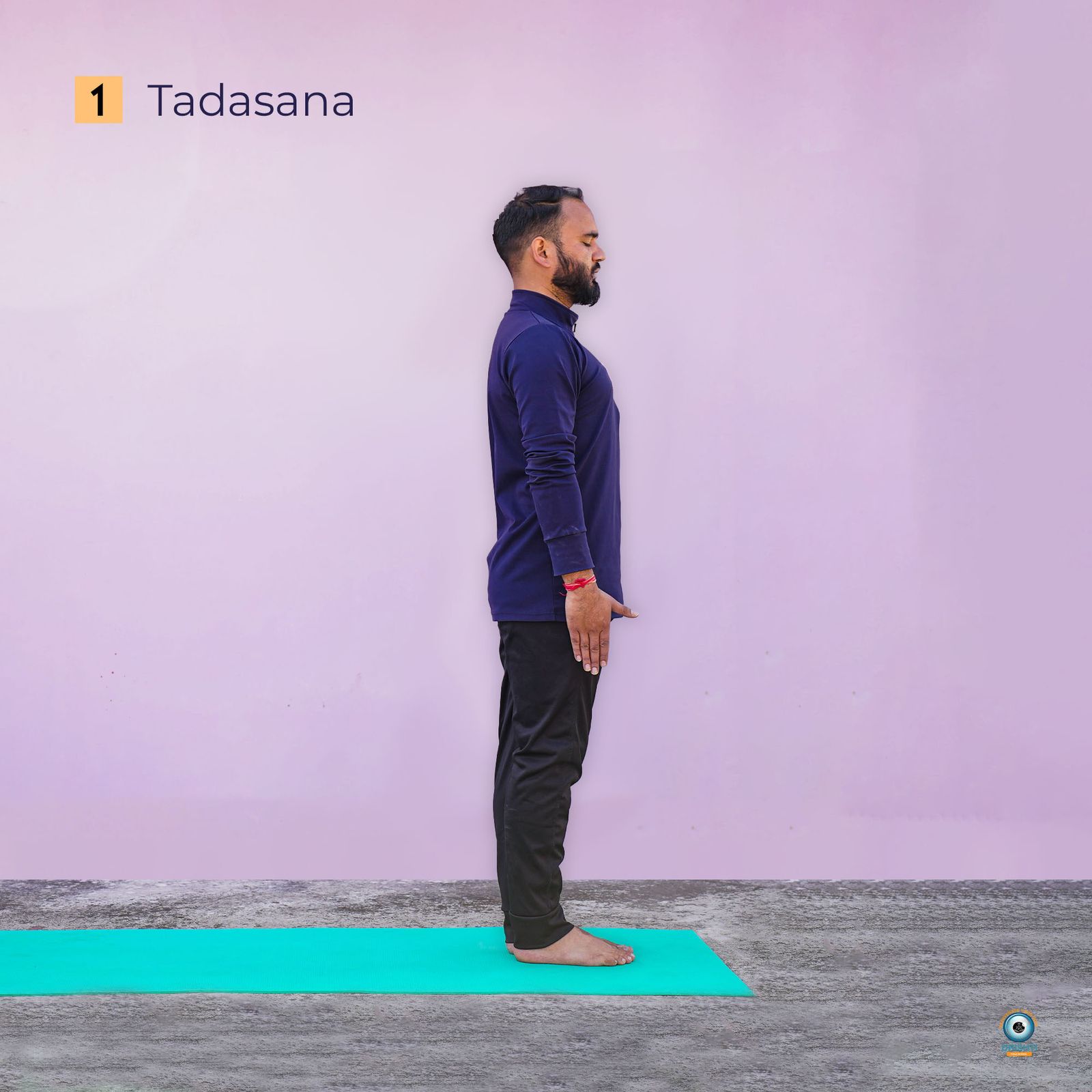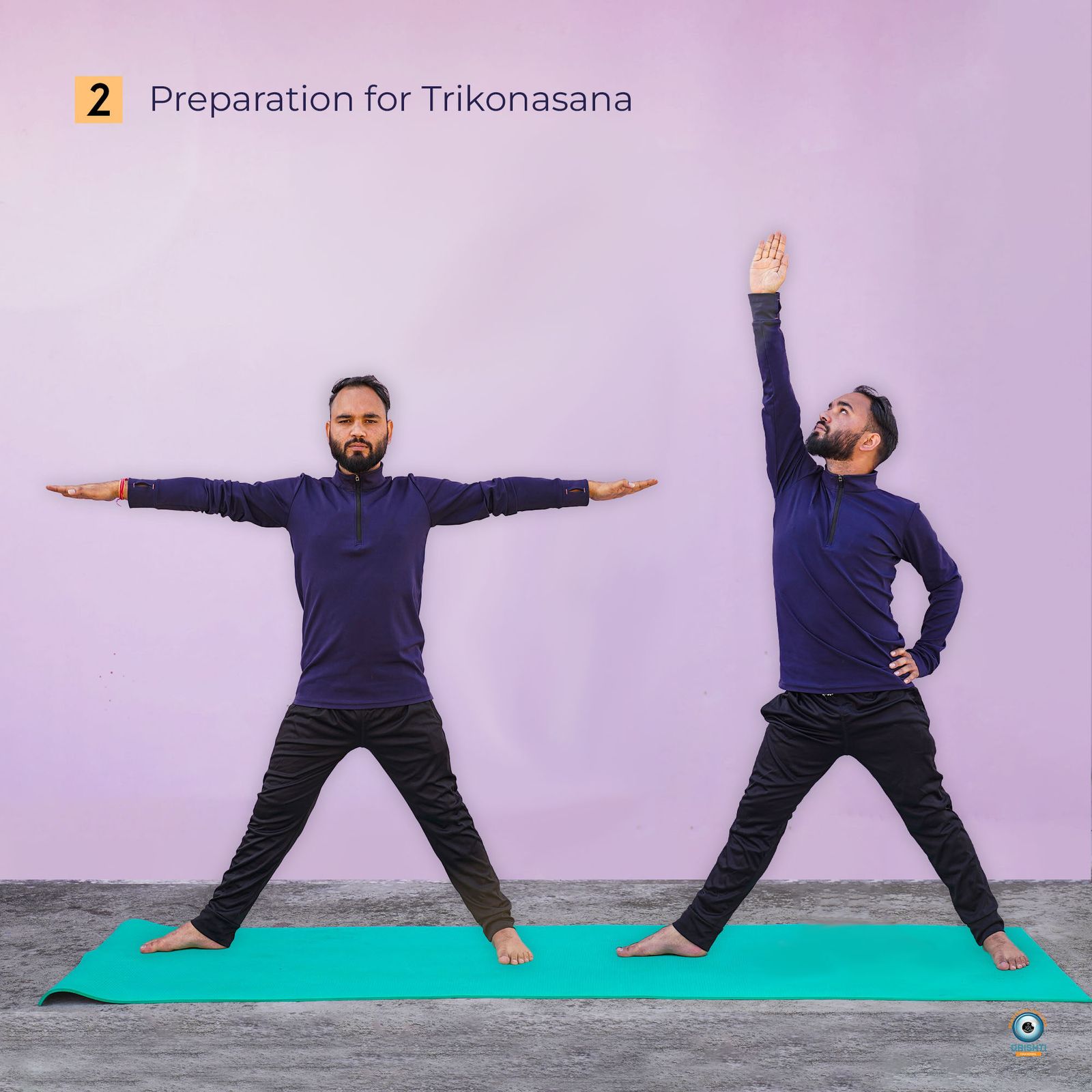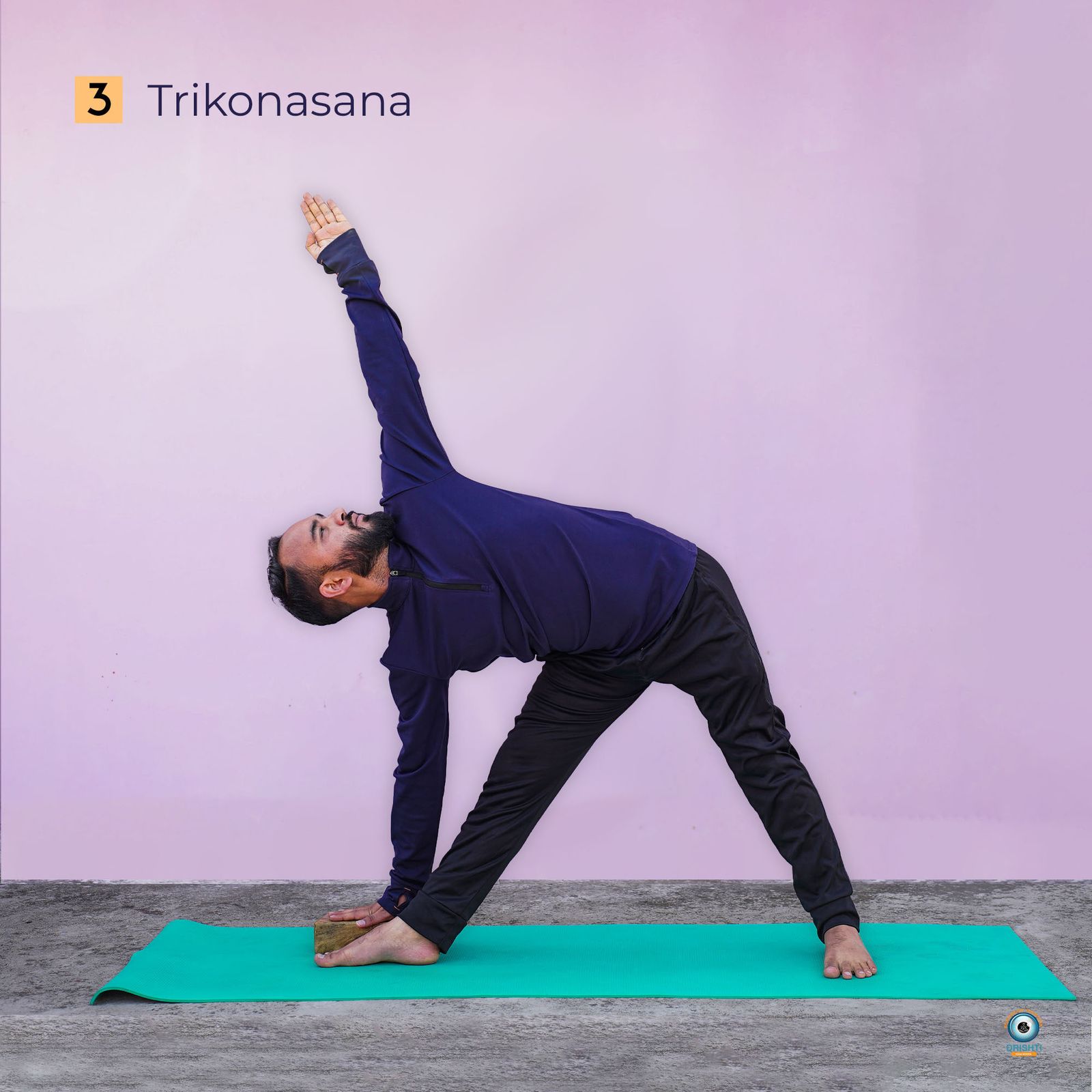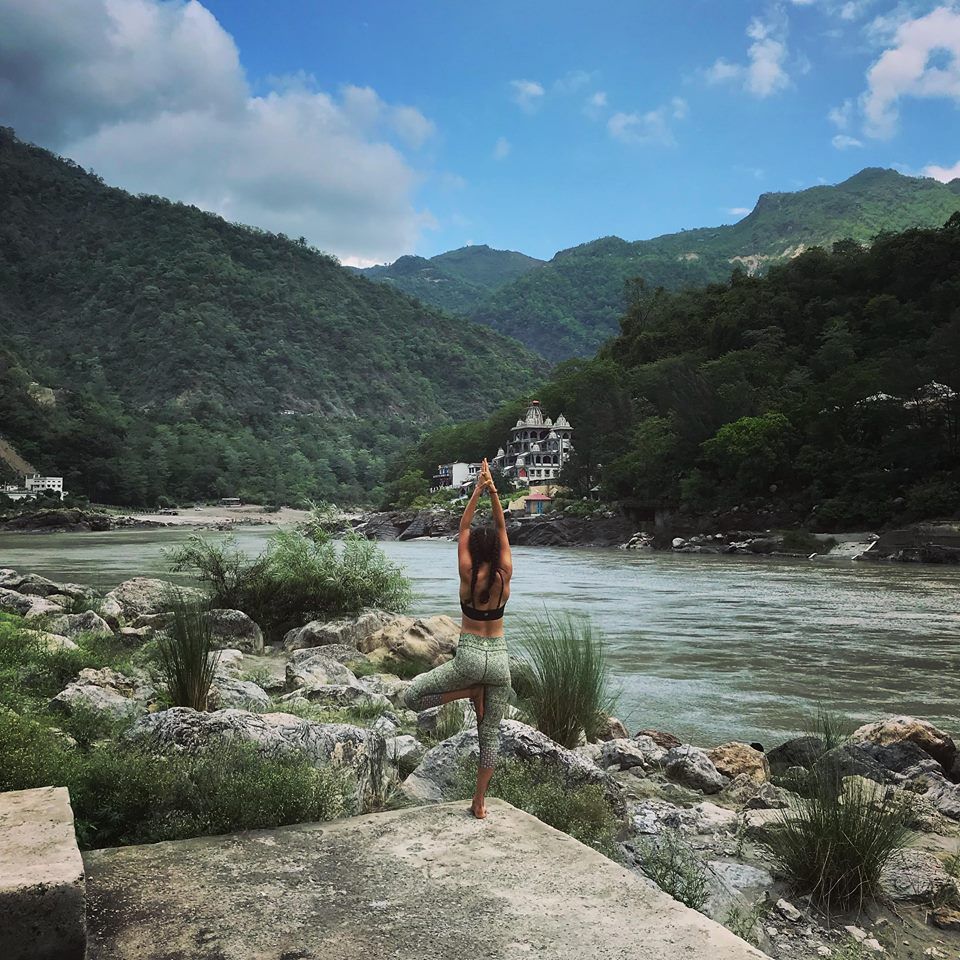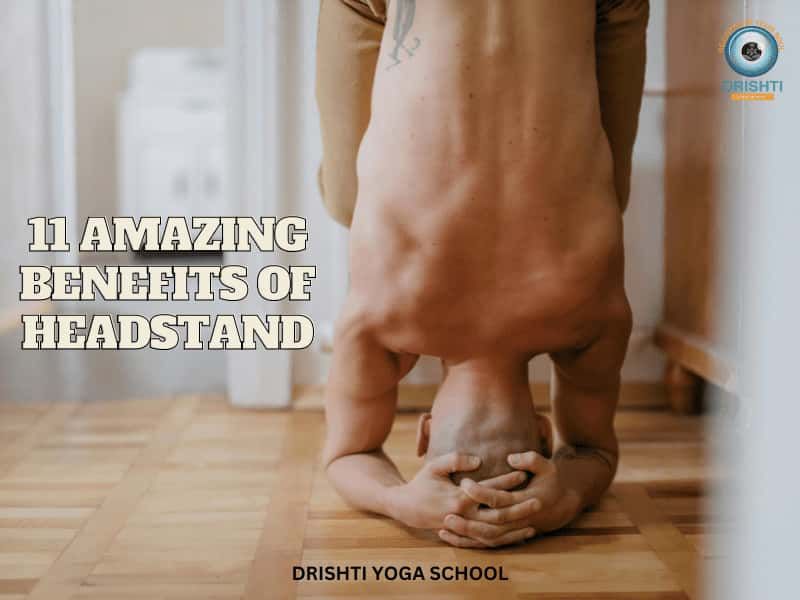Utthita Trikonasana or Triangle Pose is an extended asana.
Trikonasana in Sanskrit, “Trikon” means Triangle and “Asana” is the posture.
According to Hatha Yoga, one of the most ancient practices ’Tri’ means three and ‘Kona’ means ‘corner’. So, trikonasana literally translates to ‘Three-corners’.
Yoga has been practiced for centuries to benefit the body and mental health. Yoga is not only a practice or performing asanas but also to perform with the right intention. Each posture works on a specific body part and aligning the chakras to enhance the inhalation and exhalation and activate them with set guidelines.

Over the years, yoga has skyrocketed by becoming popular with the western world awakening to its benefits. Ancient Yogic Practices have reached a point where we want to introduce them in our daily lifestyle. Different styles or types of Yoga have evolved, which are modified versions of the basic yoga postures.
Some of the Yoga types are: Ashtanga or power yoga, Hatha yoga, Integral yoga, Iyengar yoga, Kundalini yoga and Vinyasa yoga. Join Our 200 Hour Yoga Teacher Training in Rishikesh To deepen your knowledge in Yoga.
How to do Triangle Pose or Trikonasana
Preparatory Poses for Triangle Pose
· Utthita Hasta Asana or Urdhva Hastasana
· Katichakrasna
· Ashwa Sanchalanasa or horse-riding pose
· Prasarita Padottanasana or intense leg stretch pose
· Veerabhadrasana II or warrior B
· Tree pose or Vrksasana
Muscles Engaged in Triangle Pose
· Hamstrings
· Glutes
· Things
· Calves
· Shoulder
· Triceps and biceps
Alignment of the Triangle posture
· Back Foot in line with the centre arch of the front foot.
· Hip parallel to the long edges of the mat.
· Side extension of the spine.
· No compression on the truck.
· Stretching the leg muscles with knee locked.
· Head in line with your shoulder.
· Shoulder in one straight line.
How to do Triangle Pose Step by Step
· Standing in Tadasana or samasthiti facing the long edges of the mat.
· Hands on hips.
· Inhale and as you exhale Jump 2-3 feet apart.
· Inhale raise your hands sideways into utthita hasta padasana or star pose.
· Lengthening the spine from Lumbar to Cervical.
· Tuck your tailbone into the pose without giving any arch on the Lower back.
· Now turn your right foot 90 degrees, keeping the hip still parallel to the long edges of the mat.
· Now inhale and raise your right hand up, stretching the right side of the body from the pit of the abdomen to the armhole and from armhole to the fingertips.
· Now without compressing the side and with full extension slowly bend from the hip.
· As you exhale, place your hand on your Calf, ankle, or a block.
· Inhale looking towards your left hand with an angle to the shoulder.
· Push your left hip back without leaning forward.
· Drishti: Fingertip or looking in front without straining the neck.
· Hold the posture for a couple of breaths.
· Focusing on the Muladhara Chakra and opening the Anahata Chakra.
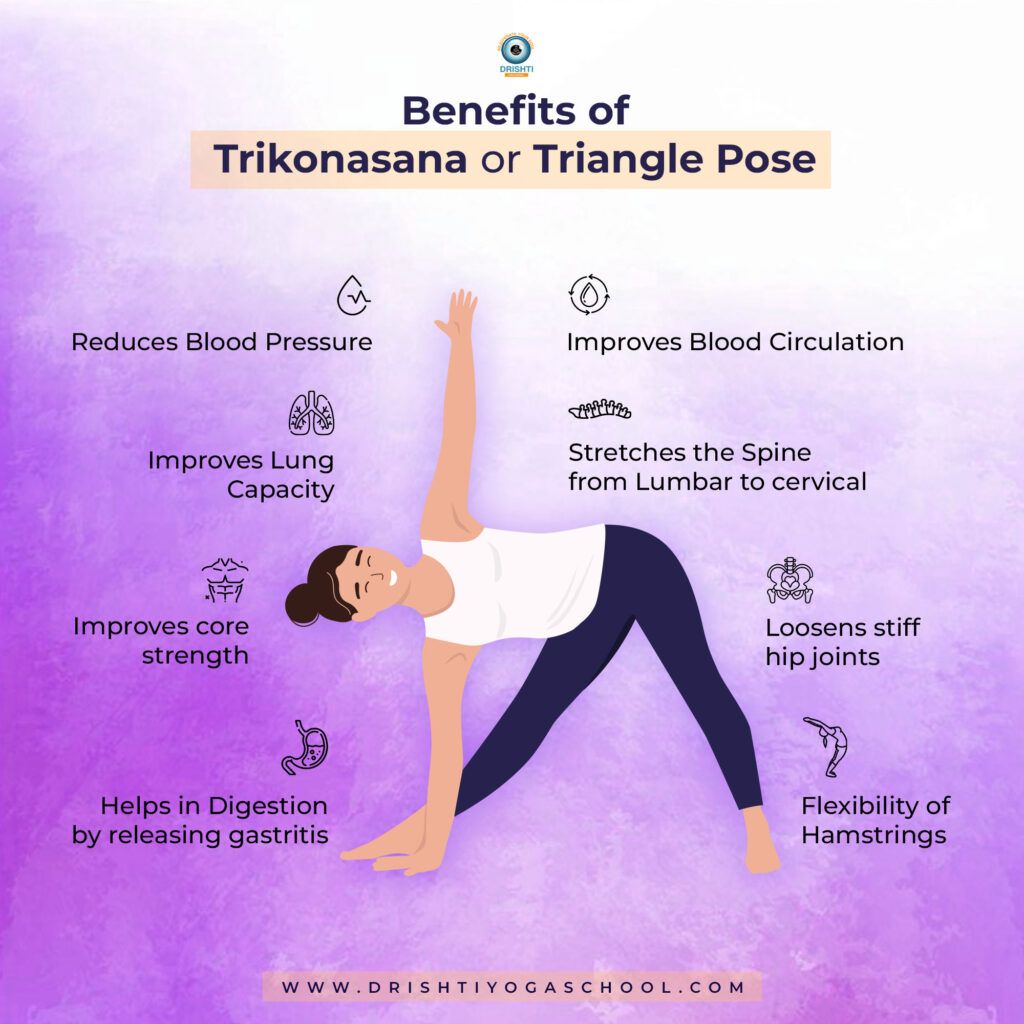
Benefits of Triangle Pose in Yoga
· Flexibility of Hamstrings.
· Opens the chest.
· Improves core strength.
· Strengthens the calves.
· Stretches the Spine from Lumbar to cervical.
· Helps in Digestion by releasing gastritis.
· Loosens stiff hip joints.
· Improves Blood circulation.
· Reduces Blood Pressure.
· Improves lung capacity.
How to release the Trikonasana Posture
· After performing the posture for a few breaths, inhale and as you exhale look down toward the foot.
· Inhale pulling with your left hand upward and gripping your outer edge of the back foot come up slowly into Parsva Hasta Padasana.
· Exhale completely, inhale, bend the front knee slightly and turn the foot towards the front.
· Inhale hands on the waist and as you exhale jump or step into Tadasana.
· Perform the same on the left side.
Variation of Triangle Posture or Trikonasana
Trikonasana with Wall
BKS Iyengar Guruji has always mentioned that the wall is your best friend. Any posture can be performed with the help of a wall and still be beneficial to the body.
Your only goal is to perform the asana with One mind or Siddhi.
Standing straight by facing your back to the wall in Tadasana or Mountain Posture in Hatha yoga . Perform the same step by step as mentioned above. Place your glutes on the wall. Hip is parallel to the wall and not away from it. Shoulder blades touching the wall, use the support to lean back but with complete awareness.
Whether you’re a experienced yogi or a beginner on this transformative journey, Triangle Pose invites you to embrace its amazing benefits. As we conclude this , remember that yoga is a lifelong journey, and each yoga pose is a stepping stone towards a more deepen and balanced existence. Step into the triangle, breathe, and discover the union of strength, flexibility, and serenity. Namaste.
